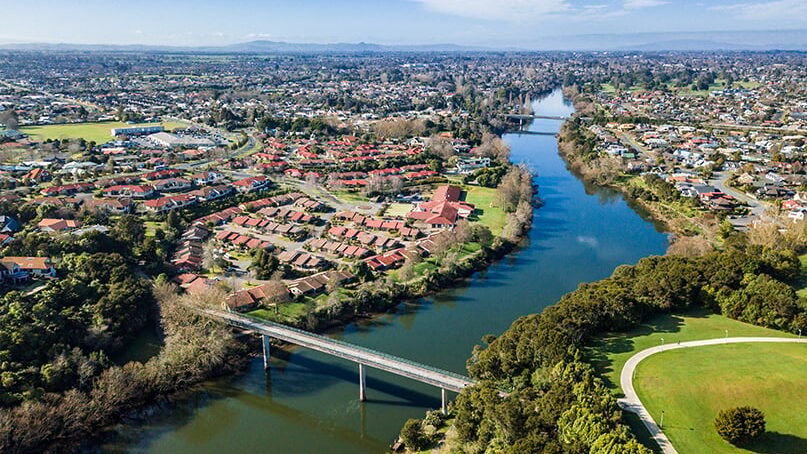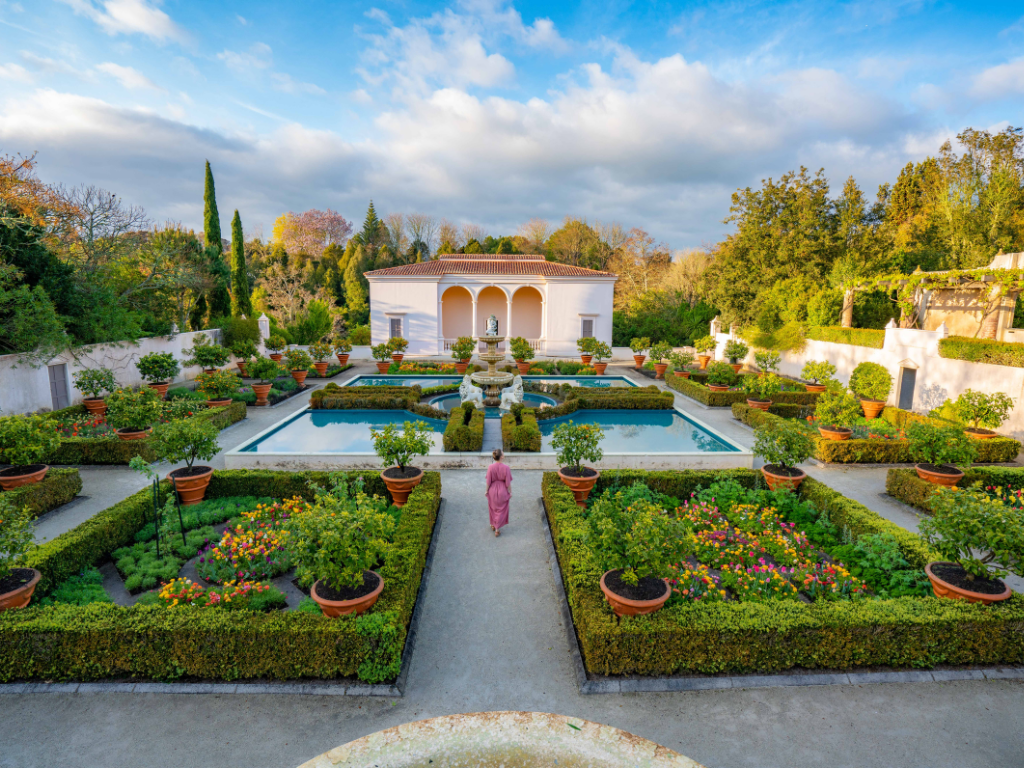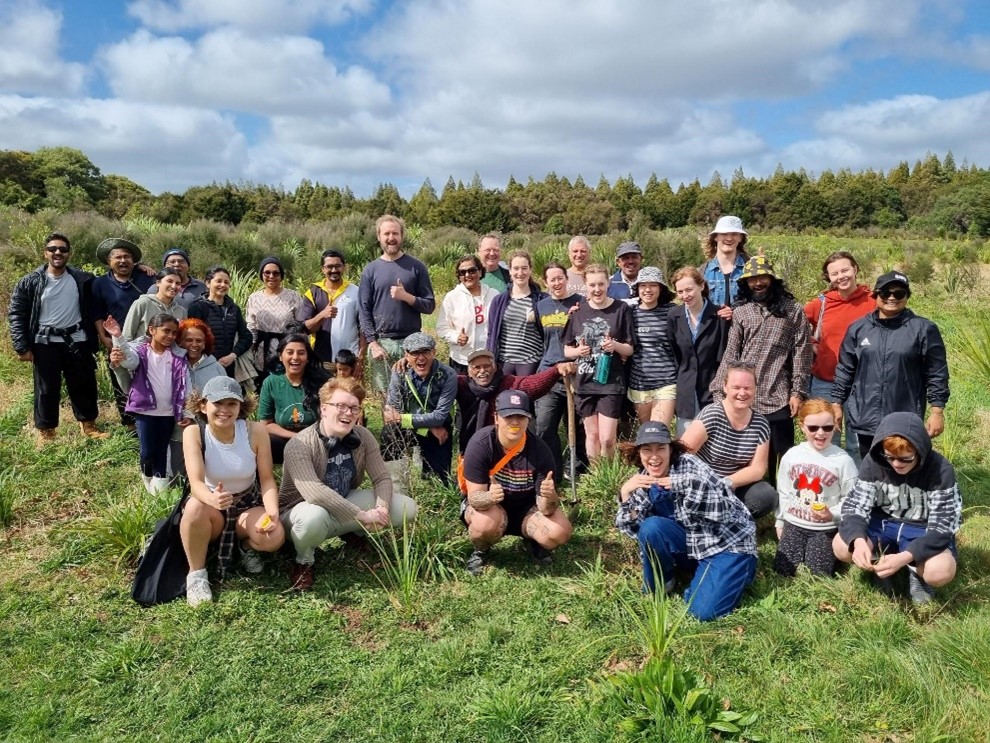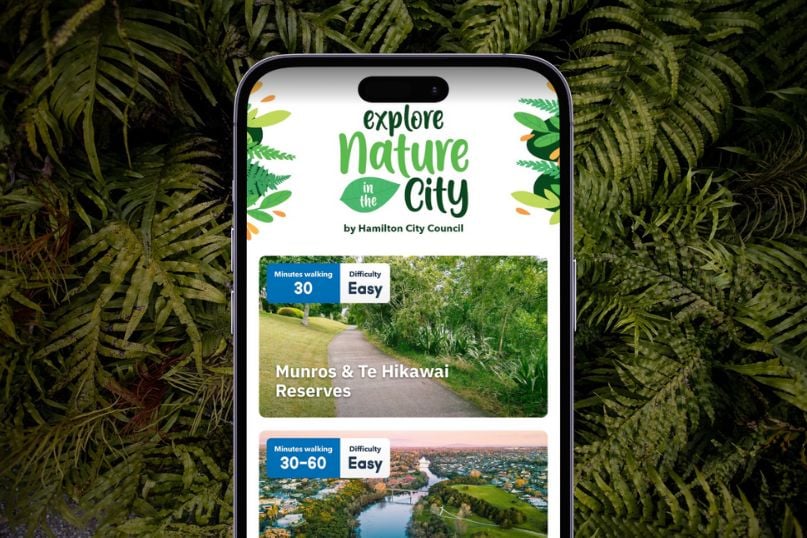Kirikiriroa (Hamilton) may be renowned for its beautiful gardens, but the city holds a surprising truth – much of its greenery is introduced plantlife, not the native species that once thrived there.

Of Hamilton’s 11,000 hectares, only 168 hectares are covered by native vegetation. However, change is on the horizon.
Enter the ambitious Nature in the City program by the Hamilton City Council.
Its goal?
To restore Hamilton’s native vegetation cover from less than 2% to 10% by 2050.
This monumental project will transform over a thousand hectares, revitalising gullies and reserves and creating new native areas.
Reaching their target means planting millions of plants. We chatted with programme manager Matthew Vare to delve into why Hamilton is embarking on this audacious journey and how it’s all progressing.

The motivation behind it all
“We want to make sure every Hamiltonian can go out and connect with nature somewhere close to home,” explains Vare.
And getting out in nature doesn’t just feel good – it’s good for us. Research consistently highlights the positive impacts of spending time in nature on mental health and cognitive function.
Creating more native green spaces serves a dual purpose: providing habitats for native birds, insects, and plants to flourish while creating havens for the community to unwind and relax. Restoring native biodiversity will also build Hamilton’s resilience to climate change.
Nature in the City will also provide much-needed room for Hamilton’s exploding tūī population. Vare explains: “Not much more than ten years ago, tūī were mostly absent from Hamilton.”
“But they’ve come back, and now we’ve reached a level where they need more habitat – that’s why [this project] is important.”
The restoration journey
By 2031, the council aims to increase native vegetation cover by 3%, along with a rise in native birds and animals in the city.
Nature in the City program is in its third year and is making significant strides.

“We’ve planted over 60,000 plants in the last twelve months and hosted 32 planting events with the help of 3,341 volunteers. We collaborate with 16 regular restoration groups, 182 volunteers, and our rangers do proactive pest plant control across the city,” Matthew Vare explains.
Currently, the program focuses on three key areas: Kukutaaruhe Gully (Donny Park), Mangaonua Esplanade Gully, and Mangaiti Gully.
At Kukutaaruhe Gully, the focus is planting 5,000 natives and constructing a boardwalk for wetland enhancement.
In Mangaonua Esplanade, extensive planting accompanies track upgrades, aiming to introduce 35,000 plants this year for ecological restoration.
Over five years, the plan for Mangaiti Gully revolves around sustaining existing plantings while introducing new ones, ensuring the success of conservation efforts.
“So far, we have focused on sites that we can significantly impact, including sites where there are active community groups already doing great work that we can add to,” explained Vare.
All seeds used in the Nature in the City program are eco-sourced. The team collects seeds from mature trees around Hamilton, nurtures them in nurseries, and plants them as seedlings.
This approach ensures that planted native species are well-suited to the specific ecosystem.
Harvesting community engagement
With newsletters, events and even an app, the Nature in the City team employs diverse strategies to engage Hamiltonians.
“We have a quarterly newsletter that provides updates on the programme. We also share updates on our social media,” Vare shares.
“We hosted our first BioBlitz last year with the community in Kukutaaruhe Gully, where people came together to explore the area and learn about what species are living there. People recorded 389 observations with 185 different species identified.”
Roughly half of Hamilton’s gully areas are privately owned, so a pivotal aspect of the program involves liaising with landowners.

“To restore these privately owned sections, a dedicated restoration advisor collaborates with landowners, resulting in 117 currently engaged in the restoration efforts.”
The Nature in the City mobile app was launched for Android and Apple users to enjoy, free of charge. The app starts with ten self-guided tours, spotlighting Hamilton’s native biodiversity, the ongoing restoration work, and captivating stories about its natural spaces.
Are you a local? Join the cause.
Matthew’s message is clear for Hamiltonians eager to participate: “Volunteer!”
“We work with the dedicated community groups in Hamilton and can help connect you with them. People can sign up to volunteer on our website and find a volunteer group near them or get involved in one of our bigger community planting days. Another way to get involved is to sign up for our newsletter to hear more about the programme.”
“Spending time in our natural areas is also a great way to get involved. The more we learn and explore our gullies and natural areas, the more passionate we are about protecting them.”
Nature in the City is a flourishing effort to restore the city’s native vegetation – creating spaces where nature and community can thrive. But it isn’t just about planting trees; it’s about sowing the seeds of connection, understanding, and appreciation for our native species.

